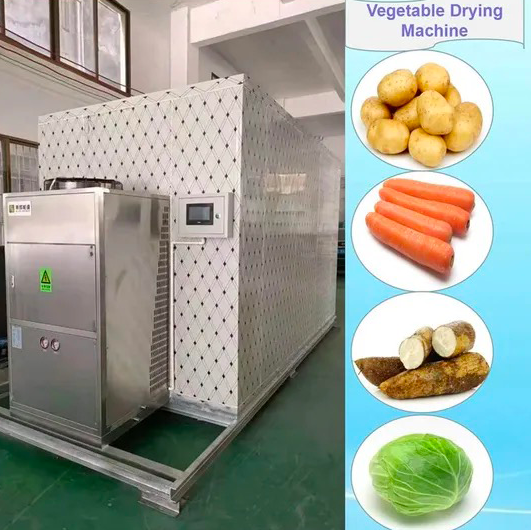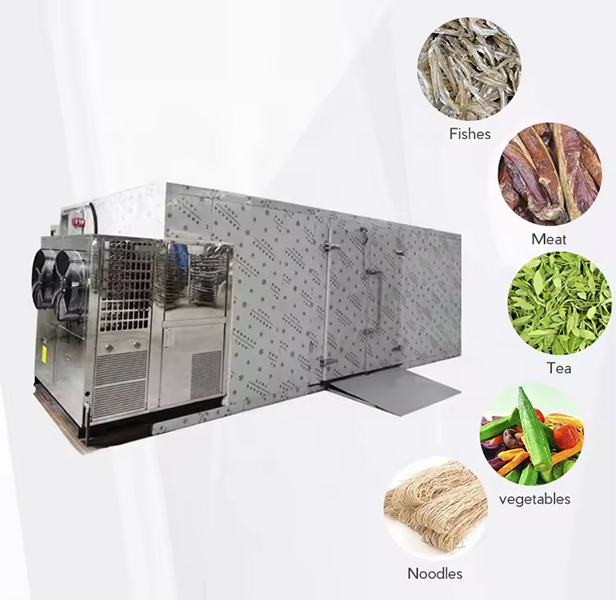
Content Menu
● Understanding Food Drying Machines
>> How Do Food Drying Machines Work?
● Benefits of Using Food Drying Machines
● Cost Considerations for Heat Pump Dryers
>> Initial Investment vs. Long-Term Savings
● Will A Heat Pump Dryer Pay for Itself?
● Types of Food Dehydrators
● Choosing the Right Food Dehydrator
● Tips for Using Food Dehydrators Effectively
● Conclusion
● FAQ
>> 1. What is a food dehydrator?
>> 2. How does a heat pump dryer work?
>> 3. What are the benefits of using a food dehydrator?
>> 4. How much can I save with a heat pump dryer?
>> 5. Are there any rebates available for purchasing heat pump dryers?
● Citations:
Food drying machines, particularly heat pump dryers, have gained popularity in recent years due to their energy efficiency and ability to preserve food effectively. In this article, we will explore the benefits of food drying machines, how they work, the cost implications, and whether a heat pump dryer can pay for itself over time.

Understanding Food Drying Machines
A food drying machine, often referred to as a food dehydrator, is designed to remove moisture from food items like fruits, vegetables, and meats. This process not only extends the shelf life of these foods but also enhances their flavors and nutritional value.
How Do Food Drying Machines Work?
Food dehydrators operate by circulating warm air around the food placed on trays within the machine. The heat source raises the temperature inside the unit, which is crucial for drawing out moisture. A fan circulates warm air evenly to ensure uniform drying. Most modern dehydrators come with adjustable temperature settings and timers, allowing users to customize the dehydration process based on the type of food being preserved.
- Circulation of Hot Air: The heating element generates hot air that is directed into the drying chamber. A fan or blower circulates this air around the food, ensuring even drying.
- Temperature Control: Different foods require different temperatures for optimal drying. Dehydrators typically have adjustable temperature settings to accommodate various types of food.
- Humidity Control: Advanced models feature humidity control that monitors and adjusts moisture levels during the drying process.
- Ventilation: Breathable trays allow air to circulate freely around the food, facilitating moisture removal.
Through these working principles, a food dehydrator provides a controlled environment where moisture in the food gradually evaporates, resulting in its drying. This drying process extends the shelf life of the food while preserving its texture and nutritional value.
Benefits of Using Food Drying Machines
Investing in a food drying machine offers numerous advantages:
- Nutrient Retention: Unlike canning or freezing, dehydration preserves most vitamins and minerals in foods.
- Longer Shelf Life: Dehydrated foods can last for months or even years when stored properly, making them ideal for long-term storage.
- Cost-Effective: Purchasing seasonal produce in bulk and dehydrating it can save money over time by reducing waste.
- Healthy Snacking: Dehydrated fruits and vegetables are free from preservatives and added sugars found in many store-bought snacks.
- Versatility: These machines can be used to make a variety of items including fruit leathers, jerky, dried herbs, and even pet treats.
Cost Considerations for Heat Pump Dryers
Heat pump dryers are known for their energy efficiency compared to traditional dryers. They use a refrigeration system that recycles air rather than venting it outside. This process allows them to consume significantly less energy—about one-third of that used by conventional dryers.
Initial Investment vs. Long-Term Savings
While heat pump dryers typically have a higher upfront cost (around $1,400), they can lead to substantial savings on energy bills over time. According to estimates, a heat pump dryer can save an average household up to $330 over five years compared to traditional dryers.
For example:
- A family using a traditional electric dryer might spend approximately $98 per year on energy costs. Switching to a heat pump dryer could reduce this cost to about $43 annually, resulting in significant savings over time.

Will A Heat Pump Dryer Pay for Itself?
The question of whether a heat pump dryer will pay for itself depends on several factors:
1. Usage Frequency: The more you use the dryer, the quicker you will see savings.
2. Energy Costs: Higher local electricity rates will increase potential savings.
3. Initial Cost: The higher upfront cost must be weighed against long-term savings.
Based on average usage patterns and energy costs, many households may find that their heat pump dryer pays for itself within five to seven years due to reduced energy expenses coupled with potential rebates from government programs.
Types of Food Dehydrators
Food dehydrators come in various types, each with its unique features:
- Vertical Airflow Dehydrators: These models have fans located at the top or bottom. Vertical airflow helps distribute heat evenly but may require rotating trays during use for consistent results.
- Horizontal Airflow Dehydrators: With fans positioned at the back or sides, these dehydrators provide more uniform drying without needing tray rotation. They are often preferred for larger batches or specific foods like jerky.
- Multi-functional Dehydrators: Some advanced models offer additional features such as yogurt making or fermentation capabilities alongside dehydration.
Choosing the Right Food Dehydrator
When selecting a food dehydrator, consider factors such as:
- Capacity: Depending on your needs (family size or batch production), choose a model with an appropriate number of trays.
- Temperature Range: Ensure it has adjustable settings suitable for various foods.
- Ease of Cleaning: Look for removable trays and non-stick surfaces that simplify maintenance.
- Noise Level: Some dehydrators operate quietly while others may be noisier due to fan operation.
Tips for Using Food Dehydrators Effectively
To maximize your food dehydration experience:
- Cut Uniformly: Ensure all pieces are similar in size for even drying.
- Avoid Overloading Trays: Spread food in a single layer without overcrowding.
- Rotate Trays Periodically: If using vertical airflow models, rotate trays halfway through drying.
- Check Doneness Regularly: Keep an eye on progress; if food feels sticky or moist, it likely needs more time.
- Experiment with Flavors: Try marinating meats or seasoning vegetables before dehydration for enhanced flavors.
Conclusion
Food drying machines provide an excellent solution for preserving food while maximizing nutritional value and minimizing waste. Heat pump dryers stand out as an energy-efficient option that can lead to significant cost savings over time. With careful consideration of usage patterns and local energy costs, many consumers will find that investing in a heat pump dryer is not only beneficial for their wallets but also for the environment.

FAQ
1. What is a food dehydrator?
A food dehydrator is an appliance designed to remove moisture from food items through controlled heat and airflow, extending their shelf life while preserving nutrients.
2. How does a heat pump dryer work?
A heat pump dryer uses a refrigeration system that recycles air within the drum instead of venting it outside. It heats the air, absorbs moisture from clothes, then cools it down to collect water.
3. What are the benefits of using a food dehydrator?
Benefits include nutrient retention, longer shelf life for foods, cost-effectiveness by reducing waste, healthy snacking options without preservatives, and versatility in preparing various dried foods.
4. How much can I save with a heat pump dryer?
On average, households can save up to $330 over five years by switching from traditional dryers to heat pump dryers due to lower energy costs.
5. Are there any rebates available for purchasing heat pump dryers?
Yes, many regions offer rebates through programs aimed at promoting energy efficiency; these can significantly offset the initial purchase cost of heat pump dryers.
Citations:
[1] https://septree.com/pages/what-is-the-working-principle-of-food-dryer
[2] https://www.cnet.com/pictures/tips-for-using-your-new-dehydrator/
[3] https://www.researchandmarkets.com/reports/5741424/food-dehydrators-global-market-report
[4] https://www.thepurposefulpantry.com/cosori/
[5] https://pocketchangegourmet.com/how-does-a-dehydrator-work/
[6] https://www.backpackingchef.com/dehydrating-food.html
[7] https://www.gminsights.com/industry-analysis/food-dehydrator-market
[8] https://www.easy-food-dehydrating.com/elite-gourmet-food-dehydrator-review.html
[9] https://www.goodhousekeeping.com/appliances/a31904157/what-is-a-dehydrator/
[10] https://www.thebusinessresearchcompany.com/report/food-dehydrators-global-market-report











